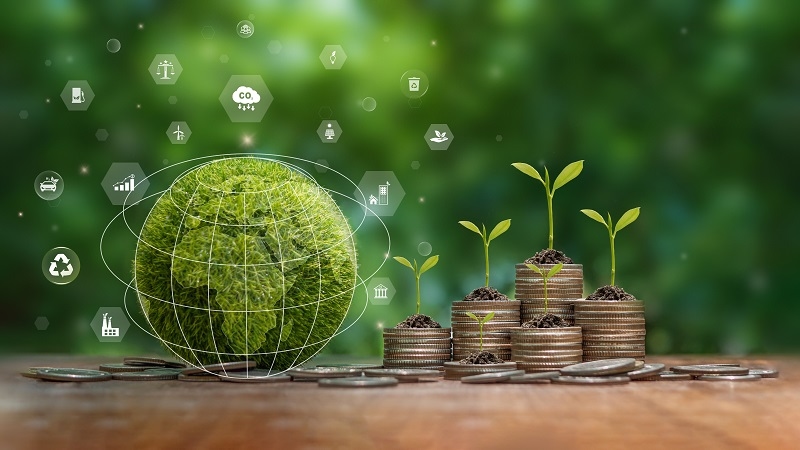
Climate stories fill the news feed. Floods in one state. Heat waves in another. People chat about it over coffee then glance at their retirement apps and wonder if their cash can help fix the mess. Green investing steps into that conversation with a simple promise.
Put money behind companies and projects that try to heal rather than harm. Sounds noble yet the idea still has to pass the what’s-in-it-for-me test. That blend of heart and wallet sets the tone for the journey ahead. Expect a few bumps. A few wrong turns. Perfection is not the point. Progress is.
Ten years back sustainable assets sat on the fringe. Today they headline quarterly reports. Analysts now track Green investment funds beside big-name tech ETFs. When BlackRock and Vanguard roll out low-carbon indexes mom-and-pop investors stop scrolling and pay attention. The swell feels like music festivals shifting from indie fields to packed arenas. Scale changes everything. Transaction costs fall. Data improves. Regulators draft clearer rules. As the rulebook thickens mainstream capital grows more comfortable and the snowball gathers speed downhill.
Energy shocks made household budgets squeal. Wildfire smoke closed schools. Headlines turned abstract climate talk into vivid daily experience. Suddenly a green investment is not just a trendy badge. It offers a hedge against the very disruptions shaking global supply chains.
Solar farms cushion fuel price swings. Efficient buildings hold rental value even as electricity costs spike. Consumers reward eco-labels at checkout lines. All of that feeds revenue streams that look resilient instead of experimental. Growth stories hook the heart with impact yet close the sale with plain numbers.
ESG SRI SDG The acronyms pile up until eyes glaze. Time for a deep breath. Focus on intention and method. Socially responsible strategies often begin by screening out certain industries. Environmental Social Governance scoring dives deeper with weighted metrics.
Impact portfolios chase measurable change like avoided carbon tons or new trees planted. For many retail savers the path starts with investing in green funds because that structure offers built-in research teams and diversified baskets. They handle the policy papers so the individual can simply set up auto-deposits each month.
Talk is cheap so investors demand numbers. Third-party auditors now track emissions avoided water saved jobs created in disadvantaged regions. Block-by-block data appears in glossy annual reports then trickles into rating databases. One popular yardstick ranks companies against a two-degree climate pathway.
Projects meeting that curve score higher and attract fresh capital. The process still feels messy. Methodologies clash. Yet transparency rises each quarter. In power markets green energy investing no longer rests on fuzzy claims. Turbine output feeds live dashboards. Everyone sees the kilowatt hours and the avoided diesel fumes in real time.

Skeptics love to whisper that values cost money. Historical charts disagree. Over the past decade most sustainable indexes tracked within a whisker of their broad-market cousins sometimes ahead sometimes a tad behind. During oil price spikes renewables outperformed.
During tech rallies carbon-light software names kept pace. The bigger observation sits outside year-by-year moves. Long horizon risk ties to stranded assets and regulatory fines. Companies ignoring climate science may face write-downs lawsuits supply shocks. Viewed through that lens sustainability looks less like a feel-good premium and more like plain risk management.
Don’t Miss Out: Growth vs Value Stocks: Spot the Difference & Invest Wisely
No strategy glows in a halo. Greenwashing remains a threat. A slick slide deck might hide mediocre action. Investors can push back by reading the footnotes searching for third-party verification checking board-level oversight. Concentration risk also lurks. A solar ETF packed with a handful of module makers could tumble if one factory catches fire.
Diversification across regions and technologies smooths the ride. Policy swings add another wrinkle. Generous subsidies today might sunset tomorrow. Seasoned managers hedge exposure across multiple jurisdictions and keep plenty of dry powder for policy-driven dips.
Open any brokerage app and a parade of tickers appears. Yet choice overload can freeze a rookie. Start small. Read one prospectus during a lunch break. Jot notes in plain language. Match fund objectives with personal goals. Are the holdings heavy on utilities or early-stage innovators. Next set a standing order. Even fifty bucks a paycheck builds muscle memory. Rebalance once a year.
Celebrate the learning curve not just the gains. Remember to keep an emergency stash in liquid accounts. Sustainability of personal finances matters as much as planet health because panic selling helps no one. For those ready to focus on infrastructure scale projects consider venture style vehicles targeting green energy investment though these carry elevated risk and longer lockups.
Hydrogen hubs earn fresh tax incentives. Battery chemistries ditch cobalt for cheaper materials. Offshore wind blades stretch longer than soccer fields. Meanwhile governments tie Covid recovery funds to carbon targets. The chessboard changes quickly.
Artificial intelligence now optimizes grid dispatch in real time squeezing more value from each solar panel. Carbon capture credits trade on blockchain ledgers. All these shifts hint at compounding adoption curves. Imagine solar on every warehouse roof community-owned microgrids in rural counties electric tractors plowing fields. Each niche forms another potential revenue stream for the patient investor.
In Case You Missed It: 2025 Capital Gains Tax Strategies for Smart Investors
Greening a portfolio is not a spotless endeavor. Mistakes will happen. A start-up may fizzle. A policy may stall. Yet momentum remains. Capital seeks opportunity and climate solutions need it desperately. The story reads less like charity and more like competitive strategy. Investors who embrace the trend early gain front-row seats to the next industrial revolution.
They place chips on cleaner air stable food supplies and affordable power for every zip code. That future is not guaranteed. It is built choice by choice share by share. The invitation stands open. Jump in feet first or dip a cautious toe. Either way the water is warming the old fossil currents are shifting and the tide keeps rolling toward a brighter horizon.
This content was created by AI